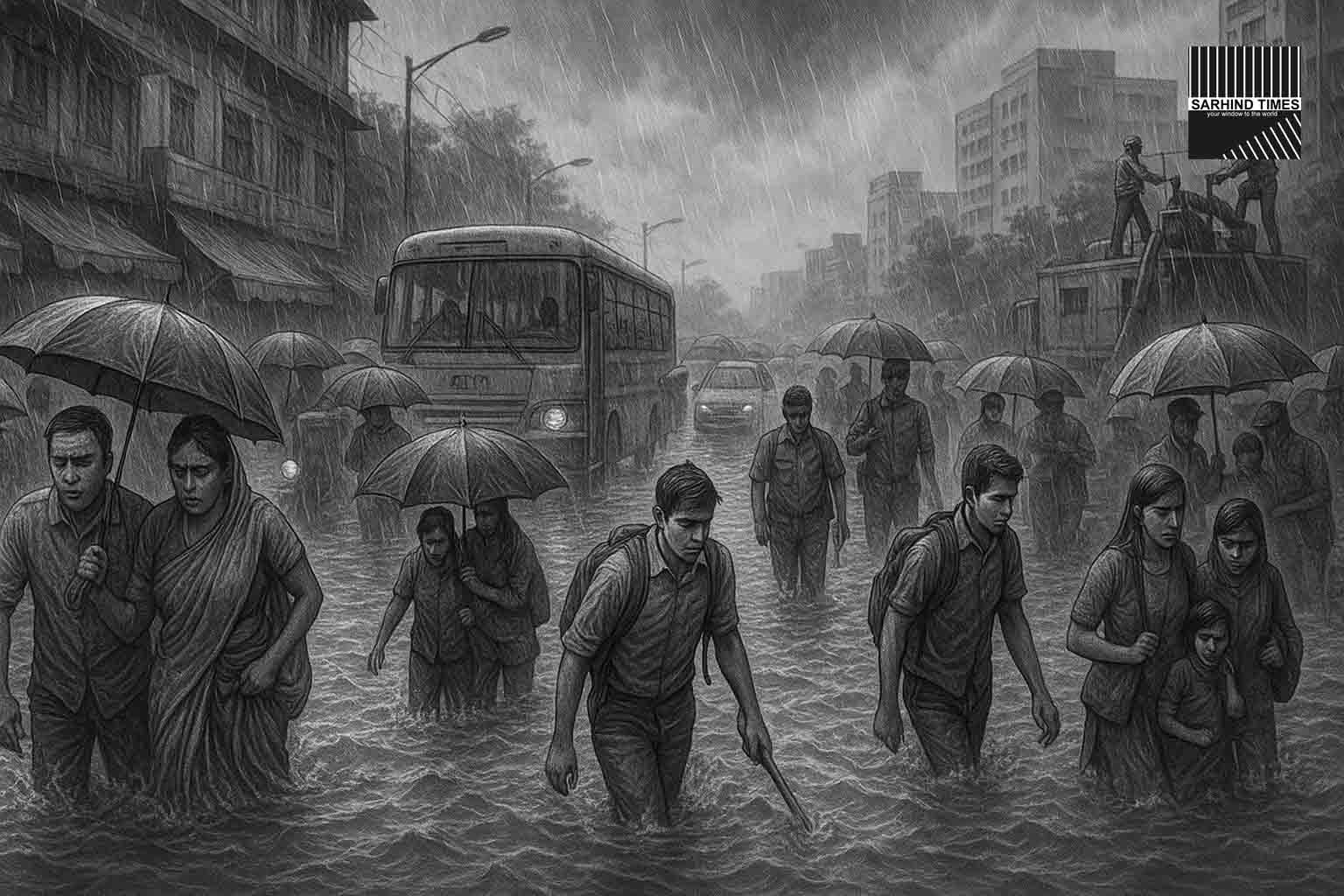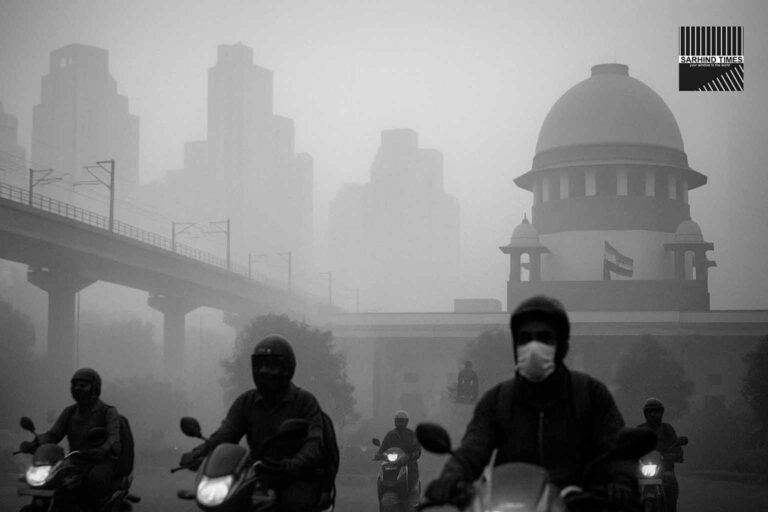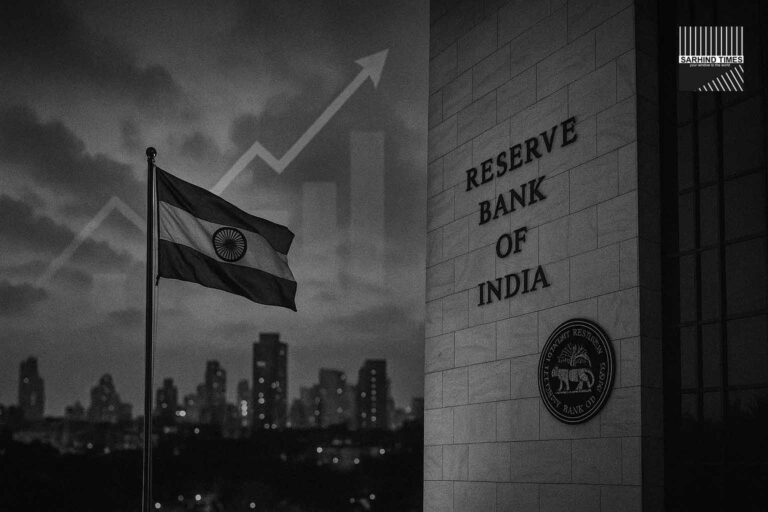New Delhi, September 28 (Sarhind Times Bureau):
The India Meteorological Department (IMD) has sounded fresh alerts for heavy to very heavy rainfall across large swathes of the country, including Odisha, Kerala, Maharashtra, and parts of the Northeast. Civic authorities in vulnerable districts have swung into action, deploying pumps, pre-positioning disaster response teams, and urging citizens to remain alert.
The latest warnings, issued late Saturday, highlight the ongoing volatility of the monsoon season, with synoptic conditions like a moisture feed from the Bay of Bengal and an active trough line driving widespread precipitation. With urban flooding, landslides, and flight delays looming as key risks, the alerts have once again underscored India’s vulnerability to extreme weather events.
IMD’s Forecast: What Lies Ahead
According to IMD officials, the wet spell is expected to intensify over the next 48–72 hours. Forecast models indicate:
- Odisha: Heavy rainfall in coastal belts; risk of river swelling.
- Kerala: Very heavy downpours in central and southern districts; squalls over coastal waters.
- Maharashtra: Widespread rain with thunder in Konkan and Mumbai regions; potential for waterlogging.
- Northeast: Intense rainfall in Assam, Meghalaya, Arunachal Pradesh, and Nagaland.
Officials added that while rainfall will be beneficial for reservoirs and late Kharif crops, the short-term hazards remain significant.
States on High Alert
Odisha
The state disaster management authority has pre-deployed units in coastal districts. Fishermen have been advised against venturing into the sea. Local administrations are monitoring river embankments and flood-prone villages.
Kerala
Kerala, which has faced devastating floods in past monsoon seasons, is especially on edge. Authorities are conducting evacuation drills in low-lying areas, while schools in certain districts have been asked to remain shut.
Maharashtra
Mumbai and neighboring districts remain under watch. The municipal corporation has deployed pumps at chronic waterlogging points and urged commuters to avoid underpasses. The city’s rail and air traffic controllers are bracing for delays.
Northeast
With fragile hillsides and deforestation worsening landslide risks, Northeast states are working with the NDRF to prepare evacuation routes and relief camps.
Aviation and Transport Disruptions
The Directorate General of Civil Aviation (DGCA) has cautioned airlines of possible convective activity over key hubs. Passengers are advised to check flight statuses before travel. Railways have issued speed restrictions on certain sections prone to track flooding.
Health Risks: A Hidden Challenge
Post-rain humidity creates fertile ground for vector-borne diseases such as dengue, malaria, and chikungunya. Health officials in Kerala and Maharashtra have launched awareness drives urging citizens to:
- Remove stagnant water from surroundings.
- Use mosquito repellents and nets.
- Seek early treatment for fever and fatigue.
Medical teams have also been placed on standby in district hospitals.
Voices from Experts
Meteorologists stress that the pattern is consistent with climate variability.
- “The Bay of Bengal remains highly active in September, and trough conditions have created a conveyor belt of moisture,” said an IMD scientist.
- Climate experts argue that rapid urbanization without adequate drainage planning amplifies flood risks, turning heavy rain into disasters.
Public Response
In cities like Mumbai, Thiruvananthapuram, and Bhubaneswar, residents rushed to stock up on essentials. Social media was abuzz with pictures of swollen drains, waterlogged streets, and alerts shared by civic bodies.
Volunteers and NGOs have also mobilized, offering helplines and shelter for vulnerable groups.
The Larger Pattern: India and Extreme Weather
India’s exposure to extreme weather has intensified in recent years. The IMD recorded a sharp rise in extreme rainfall events—short, intense bursts of precipitation causing flash floods.
- In 2018, Kerala saw catastrophic floods.
- In 2021, Konkan and Western Ghats regions witnessed landslides after record rain.
- In 2022 and 2023, Northeast states faced repeated floods and landslips.
Experts warn that climate change is shifting rainfall patterns, making monsoons both unpredictable and destructive.
Preparedness: The Road Ahead
Authorities across states are pushing a multi-layered strategy:
- Urban resilience: Better stormwater drainage, smart sensors for flood alerts.
- Community preparedness: Citizen helplines, early warning apps.
- Disaster response: Stronger coordination between IMD, NDRF, and local agencies.
- Agricultural planning: Advisories to farmers for crop protection and sowing adjustments.
However, the gap between policy and implementation remains a persistent challenge.
Conclusion
The IMD’s fresh alerts are a reminder of India’s precarious balance with the monsoon. While rains are life-giving for agriculture and reservoirs, their intensity and unpredictability increasingly test the resilience of cities, villages, and institutions.
For now, the nation waits under grey skies—preparing for yet another battle with the elements, while hoping the lessons of past floods help minimize loss this season.
#IMD #WeatherAlert #Monsoon #Rain #Odisha #Kerala #Maharashtra #Northeast #SarhindTimes #Climate






















+ There are no comments
Add yours